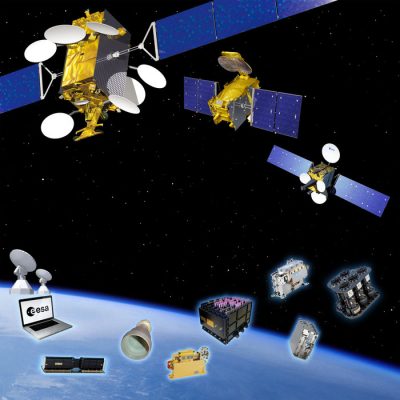The Government of Canada has invested more in its partnership with the European Space Agency to boost Canadian space sector innovation and science.
The announcement was made by the Canadian Space Agency on Thursday at a meeting in Lucerne, Switzerland, of the European Space Agency’s (ESA’s) member and cooperating states.
According to the new announcement, Canada will be investing around $83 million (€53.6 million) in three European Space Agency programmes.
 ARTES is one of the three ESA programmes Canada is investing in. Image: ESA – ARTES
ARTES is one of the three ESA programmes Canada is investing in. Image: ESA – ARTES
The money includes an additional $30 million for ARTES – the ESA’s Advanced Research in Telecommunications Systems.
The other two programmes are the Earth Observation Envelope Programme, and the General Support Technology Programme.
Canada and the ESA have been collaborating in the space sector since the early 1970s. They formalized the partnership in 1979 with the signing of the first Cooperation Agreement, which has been renewed four times since.
Stimulate innovation
The agreement enables Canadian space sector companies and universities to take part in ESA projects, while European partners get the benefit of Canadian expertise. The Canadian space sector also gains access to data from ESA missions and infrastructure.
The idea is to stimulate innovation and keep the Canadian space industry dynamic and competitive in the global market.
For example, the ESA ARTES programme helps Europe and Canada keep a competitive foothold in the worldwide satellite communications market for applications such as broadcasting, data relay, multimedia and mobile communications, search and rescue, and aviation services.
The ESA is an international organization with headquarters in Paris. It has 22 member states – Canada is the only non-European cooperating state.
Space sector growing jobs, boosts productivity
Around 10,000 people are employed in Canada’s space sector which generates about $5.4 billion in revenue and accounts for $2.9 billion of GDP, according to a 2015 assessment. The sector has grown nearly six times faster than the national job market.
The Canadian space sector is a magnet for highly-qualified engineers, scientists, and technicians, which account for over half of the sector’s workforce, whose per capita GDP is double that of Canada’s broader industrial workforce.
“Canada’s space program is, in effect, a research and innovation program,” says Navdeep Bains, Minister of Innovation, Science and Economic Development, who adds:
“The technologies designed for today’s space program can be applied tomorrow to our everyday lives and raise the living standards of all Canadians.”
As well as the partnership with ESA, Canada collaborates with the US National Aeronautics and Space Administration (NASA), the Japan Aerospace Exploration Agency, and the Indian Space Research Organization.

